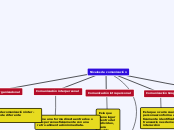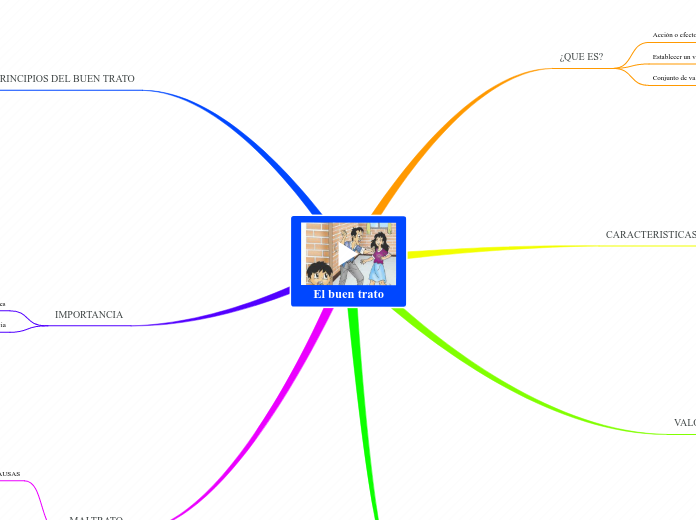COMUNICACIONES Y FUNCIONES DE LENGUAJE
To name your story, you have to think about the overall message and what you want your audience to understand from the story. Also, make it relevant and easy to remember.
FUNCIONES DEL LENGUAJE
The ending of a story is essential. We all know that if the ending is weak, what happened before loses its importance. So make it unpredictable, but fair. A resolved ending answers all the questions and ties up any loose threads from the plot.
Función ejecutiva
Este tipo de función no pretende informar, ni expresar emociones, ni dar órdenes. Se dice que la función ejecutiva del lenguaje aparece cuando se formula un juramento, una promesa, una declaración, una apuesta, etc.
Función poética
Si la comunicación se orienta al mensaje, la función del lenguaje que predomina es la poética.Este excede a la poesía, puede ser reconocida en textos literarios no poéticos, en discursos judiciales, en artículos periodísticos, en la construcción de lemas de campañas políticas, títulos de películas, etc. Se compone por la acertada elección léxica, la armonía y la sonoridad de las palabras, las pausas, los acentos, las simetrías y la aplicación de figuras retóricas.
Función conativa o directa
Si la comunicación se orienta al receptor, la función del lenguaje que predomina es la conativa, o directa, o apelativa. Uno de sus fines es afectar el comportamiento del receptor y provocar en él una reacción.Suele aparecer en oraciones con verbo imperativo, ya sea en pedidos, ruegos, órdenes, solicitudes, encargos, demandas, ordenanzas, resoluciones, dictámenes, etc.
Función metalingüística
This is the closure section of the story.
See examples of possible outcomes below:
- all problems have been solved
- it's clear how each one of your characters ends up
- your main character is transformed by the challenge
Si la comunicación se orienta al código la función del lenguaje que predomina es la metalingüística. El metalenguaje es aquel que hace del lenguaje su objeto de reflexión. Cuando el mensaje tiene como finalidad fundamental referirse al propio código al que pertenece o otros mismos códigos.
Try answering these questions to come up with a closure:
- Have all the problems been solved?
- Is there a clear picture of what happens with each character in the story?
- Has the challenge transformed your main character?
- How do the characters feel in the end?
Función emotiva o expresiva
Si la comunicación se orienta al contexto, la función del lenguaje que predomina es la referencial o informativa.Si la comunicación se orienta al contexto, la función del lenguaje que predomina es la referencial o informativa.
Función referencial o informativa
There wouldn't be any tension and excitement in your story if there weren't any obstacles in your character's way.
Si la comunicación se orienta al contexto, la función del lenguaje que predomina es la referencial o informativa.Esta función la tienen los mensajes conceptuales, centrados en el contexto, cuya función principal es la de informar.Suele aparecer en anuncios informativos, manuales académicos, noticias periodísticas, enciclopedias, mensajes publicitarios, etc. Pretende informar, aclarar, exponer, orientar, notificar, explicar algo concreto.
A story is nothing more than a character overcoming a series of difficulties to reach the desired goal. Obstacles usually create suspense and conflict. In overcoming obstacles, there is growth: weak becomes strong; hatred turns into love; sadness into happiness; wrong into right; lies into truth; or evil becomes good.
See a few examples below:
- stopping a meteor
- finding a killer
- finding love
Función fática
This is the moment when the main character surpasses the last obstacle and finally faces their greatest challenge.
The climax usually follows one of these patterns:
- realization
- resolution
- choice
Type in your answer.
Si la comunicación se orienta al canal, la función del lenguaje que predomina es la fática. Esta función asocia los mensajes que pretenden dar cuenta de que el canal de comunicación está disponible. Intenta establecer, prolongar o interrumpir la comunicación con el fin de verificar el funcionamiento del circuito.
CONCEPTOS
The middle of the story is where you add layers of complications that will lead to the end. Reveal more about the character's journey. Did their personality go through changes? How did they overcome the challenges? And as you build up the story’s central conflict, make it more personal to that character. Also, from the middle act, you have to lead into the final act.
Lengua, lenguaje y habla
Each story has a main character and that character usually needs to solve a problem or challenge. The character's challenge is the one that creates tension throughout the story.
Habla
EI habla es la facultad de aplicar y conocer esos signos para establecer una comunicación de forma práctica; es la realización fisica del idioma.
Lenguaje
Type in any other challenges which other characters in the story need to face.
El lenguaje es la capacidad de los seres humanos de comunicarse, basándose en un conjunto de signos y normas que conforman cada lengua.
Lengua
In most stories, there are 3 challenges. The number 3 is a mystical number symbolizing completeness. Try to come up with interesting challenges with which your character needs to struggle.
See a few examples below:
- turns into a werewolf at night
- is sent back in time
La lengua está formada por un conjunto de signos que conforman un código.
Signo Lingüístico (SL)
The setting (time & place) of a story can change throughout the plot.
Elementos del acto de comunicación
Sensory details include sight, sound, touch, smell, and taste. These details are important because they create depth in your setting.
See a few examples below:
- the smell of fresh bread
- the scent of freshly cut grass
- rain falling onto the windshield etc.
Código
Es la lengua o el sistema de signos, común a| emisor y al receptor. Normalmente se aplican letras y números; sí es escrito, habrá además signos de puntuación; si es oral, habrá cierta entonación, además de la gestualidad aplicada (si la comunicación se da en persona).
Canal
Es el medio físico por el que se transmite el mensaje, por ej.: el aire (cuando hablamos), un papel (si escribimos), un teléfono, un correo electrónico, una pantalla virtual de chat, etc.
Contexto o Referente
Es el tema general al que refiere el mensaje, la realidad que es referida y percibida a través de este; es el conjunto de circunstancias que rodea el acto de comunicación y que influye en la significación del mensaje.
Mensaje
Es el contenido informativo que el emisor transmite al receptor a través de unos signos simbólicos seleccionados por el emisor. Puede ser oral, escrito, gestual.
Receptor
Recibe, decodifica e interpreta el mensaje.
Emisor
Sucodifica, elabora y transmite el mensaje; lo emite. btopic
Caracteristicas
The weather is an important element in your story because it can highly influence the ambiance and the mood of the characters.
Articulación
Formado por otras unidades que pueden volver a usarse para formar nuevos signos, lo que permite el rendimiento de la lengua como código.
Linealidad
The most affected character is the main character. Write down here if he/she is affected by these weather conditions in any way. For example, if they lost a family member or their home during a hurricane, etc.
Está formado por un ciclo de unidades sucesivas que aparecen una tras otra en el tiempo y no pueden ser oídas simultáneamente; al expresar un mensaje por medio de SL tenemos que poner una palabra detrás de otra (y dentro de ella, una sílaba detrás de otra, y una letra detrás de otra)
Arbitrariedad
Decide if you want to include an element of nature in your story. For example, a rainbow can be a very nice choice for a happy ending. The mist in a story can represent mystery and secrets. A thunder can appear in the background at the moment when the 'bad guy' of the story makes its appearance, etc.
La relación entre significante y significado en el SL es arbitraria, sin una motivación particular.
Carácter biplánico
Does your story include catastrophic weather? See a few suggestions below or add your own:
- hurricane, earthquake, storm, etc
Se consta de dos partes:
a) una parte material, el significante (o plano dela expresión), que es la imagen acústica que percibimos a través de los sentidos. b) Una parte nocional o abstracta, el significado (o plano del contenido), que es la idea o concepto con la que relacionamos ese significante.
¿Cómo se constituye?
The time of the story can also change. It can describe the event of a single day or can include an entire year's plot. Anyway, don't forget to mention it.
Se constituye como una de las entidades más significativas en la comunicación humana, y el lingüista Ferdinand de Saussure (Suiza, 1857—1913) fue el teórico principal en el desarrollo de ese concepto. Estableció las características centrales del signo, abriéndole las puertas a la lingüística moderna, desarrollada a lo largo del siglo 20 y hasta el presente.
Your story can take place wherever your imagination will take you to.
For example: in an elevator, in an enchanted forest, etc. Don't forget to give details of the environment each time the setting changes, otherwise, the story can be confusing. Also, mention the seasons as each of them has unique weather and events.
El signo lingüístico es la base principal de La comunicación entre los individuos, ya sea que estemos hablando de comunicación oral o escrita.
LA COMUNICACIÓN
In the beginning of the story (or the exposition), you will need to introduce the setting and characters. You might also want to introduce the main conflict. This part of the story is important because it gives the reader necessary background information and maybe even a first insight into a character’s personality.
¿Qué es esto?
Characters are essential to a good story. Usually, the protagonist(s) is/are the most affected by the plot. Introduce a character by focusing on their actions, interests, and occupation, as the physical appearance doesn't make a difference in most cases.
La comunicación es un proceso en el cual un emisor establece una conexión con un receptor, en un momento determinado y un espacio establecido, para transmitir ideas, intercambiar información o compartir significados, que son comprensibles para las dos partes.
Type in the name of your character.










